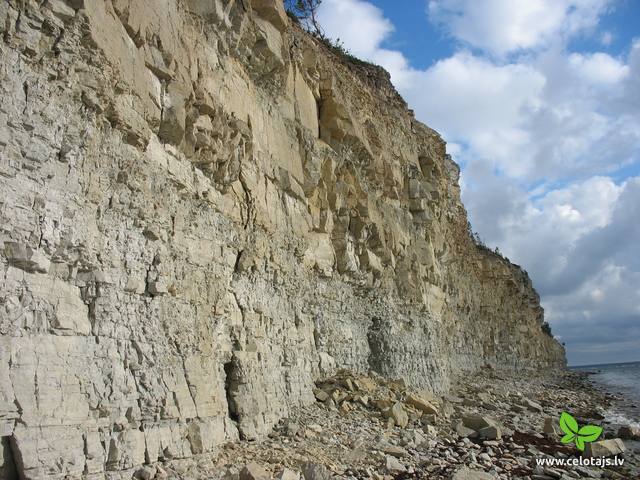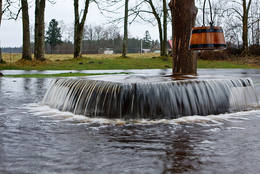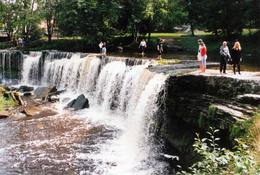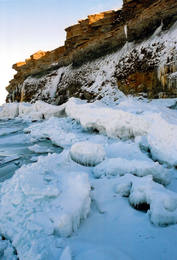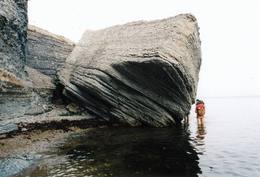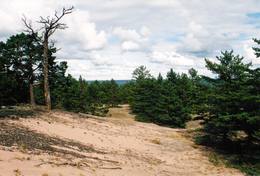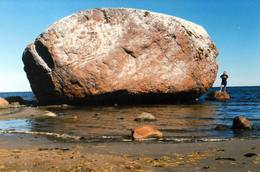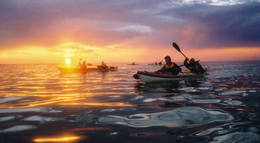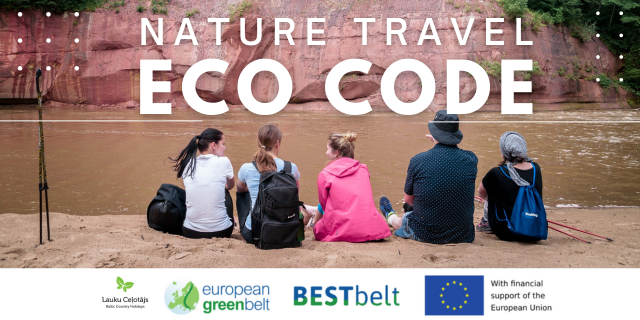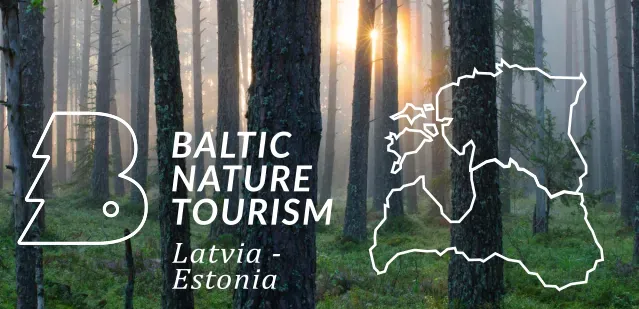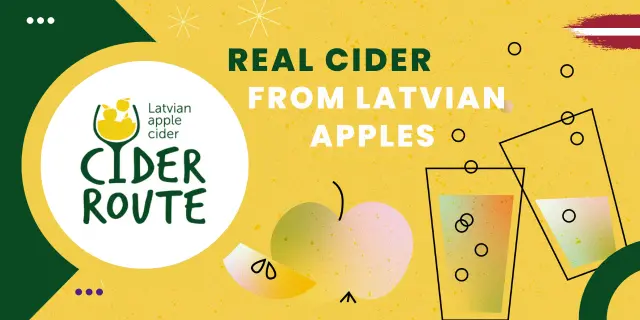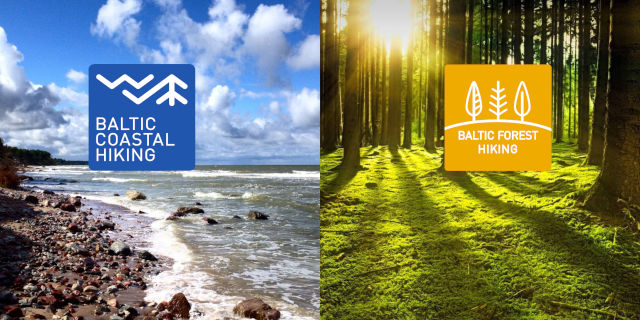Dabas objekti Igaunijā
Ar ko ievērojama daba Igaunijā?
Iespaidīgākā Baltijas klinšu siena – t.s. Ziemeļigaunijas glints, „Līču zeme” – Lahemā ar nacionālo parku, „Salu zeme” – Sāremā sala un Monzunda salu arhipelāgs, Matsalu līcis kā viena no nozīmīgākajām masveida putnu atpūtas vietām migrāciju laikā, viens no izcilākajiem Eiropas meteorīta krāteriem, izcilākie Baltijas dižakmeņi un ūdenskritumi, Munameģis – Baltijas augstākā virsotne, Peipuss – piektais lielākais Eiropas ezers – ar senām zivju ieguves tradīcijām un ārkārtīgi lielā dabas daudzveidība, kas ir acīmredzami mainīga gan austrumu – rietumu, gan ziemeļu – dienvidu virzienā, ir tikai dažas no Igaunijas valsts dabas pievilcībām.
Lai uzzinātu vairāk par apmeklējamām teritorijām aicinām izmantot vides vai vietējo gidu pakalpojumus. Esiet saudzīgi pret dabu ceļojuma laikā - ievērojiet Zaļos padomus!
| Pārskats | Detaļas |
|---|---|
|
Igaunija
Ahjas upes senlejaAhjas upes krastos no Koorvere līdz Otteni dzirnavām slejas gandrīz četri desmiti Devona perioda smilšakmens atsegumu, no kuriem divi – Väike un Suur Taevaskoja (pēdējā - 22 m augsta) ir populāri apskates objekti.
|
|
|
Igaunija
Kaali meteorīta krāterisViens no Eiropas iespaidīgākajiem krāteru laukiem. Galvenā krātera dziļums ir 22 m, diametrs – 110 m. Meteorīts nokritis pirms ~ 7,5 tūkstošiem gadu. |
|
|
Igaunija
Aegna IslandMežiem klāta sala Somu jūras līcī ~14 km uz ziemeļiem no |
|
|
Igaunija
Hjupasāres pārgājienu taka (Hüpassaare matkarada)Iepazīstina ar Somā nacionālā parka lielākā purva – Kureso (Kuresoo) ziemeļaustrumu daļu, kur redzamas purva ezeriņu un lāmu ainavas. Takas sākumā atrodas igauņu komponista, ērģelnieka un folkloras vācēja Marta Sāra (Mart Saar) (1882. – 1963.) dzimtās mājas. To apkaimē pļavas apsaimnieko aitas. Lokveida takas garums ir 4,2 km. |
|
|
Igaunija
Tuhalas dabas centrs un Raganas aka (Nõiakaev)Tuhalas apkārtne ir apdzīvota vismaz 3000 gadus. Šeit ir atrastas 11 senas apmetnes, 30 kulta akmeņi, 3 akmens senkapi, 4 svētbirzes u.c. Tuhalas lieguma teritorijā atrodas unikālā Nõiakaev (Raganas aka), kas palu laikā “vārās” un izmet 100 litrus ūdens sekundē, kā arī pieci Igaunijas spēcīgākie enerģijas stabi. Pa pastaigu ceļu, kas šķērso Tuhalas karsta procesu teritoriju (2,5 km), var iet kājām, vai braukt ar velosipēdu un automobili. Šis ceļš ir piemērots pastaigām kopā ar ģimeni. |
|
|
Igaunija
Keilas ūdenskritumsViens no Igaunijas ainaviskākajiem ūdenskritumiem – līdz 6 m augsts un līdz 50 m plats. Straujā Keilas upe aiz ūdenskrituma izveidojusi klinšainu kanjonu un tecējumu ar lielu kritumu, tādēļ pa Keilas parku vērts aiziet līdz ~ 1 km attālajam Somu līča krastam un atgriezties gar upes otru krastu.
|
|
|
Igaunija
Kīdevas (Kiideva) putnu vērošanas platformasPirmā ir uzcelta uz vienstāvīgā apmeklētāju centra jumta. No tās paveras plašs skats uz Kīdevas ciemu, ostu un niedrēm apaugušo Matsalu līča ziemeļdaļu. Austrumos no šīs atrodas vēl viena - divstāvīga putnu vērošanas platforma. No Kīdevas līdz Puisei gar Matsalu līča var doties pārgājienā pa 5 km garo dabas taku. To izejot, novēroto putnu sugu klāsts noteikti būs lielāks! |
|
|
Igaunija
Matsalu nacionālais parksViena no iecienītākajām Igaunijas putnu vērošanas vietām, kur pavasara un rudens migrāciju laikā ir novērojama liela sugu daudzveidība un zosveidīgo putnu bari, kas atpūšas un barojas Matsalu līča un Kazari (Kasari) upes palieņu pļavās un seklajos piekrastes ūdeņos.
|
|
|
Igaunija
Pakri pussalaPakri pussalas galā slejas vizuāli iespaidīgākā no Baltijas valstu piekrastes klintīm - līdz 24 m augstā Pakri klints (Pakri pank). Aukstās ziemās no kaļķakmens slāņiem izplūstošie avoti veido fantastiskus leduskritumus un neparastas ledus formas.
|
|
|
Igaunija
Pakri salasDivas salas – Lielā Pakri (Suur Pakri) un Mazā Pakri (Väike Pakri) - 3 km R no Paldiskiem (Paldiski). Padomju laikā tās izmantoja kā armijas aviācijas poligonu, par ko liecina daudzās bumbu bedres un munīcijas paliekas. Salas klāj g.k. retas kadiķu audzes, bet to Z, ZA galos paceļas iespaidīgas līdz 6 m augstas kaļķakmens klintis.
|
|
|
Igaunija
NaisāreMežiem klāta sala (6. lielākā Igaunijas sala) Somu līcī 14 km Z no Tallinas. Vēl pirms divām desmitgadēm – slēgtā zona, jo Padomju laikā te atradās ļoti slepena jūras mīnu ražotne.
|
|
|
Igaunija
Letipeas Ehalkivi akmensLielākais Baltijas (pēc dažiem avotiem – arī Ziemeļeiropas daļas, ko skāris pēdējais apledojums) dižakmens. Tā tilpums ir 930 m3! Akmens augstums ir 7,5 m, garums – 16,5 m, platums – 14 m, bet apkārtmērs – 48,5 m. Ehalkivi, kas iztālēm atgādina milzu oli, „stāv” uz smilšaini - akmeņaina sēkļa, kas atkarībā no laika apstākļiem vai gadalaika var atrasties ūdenī. Ledājs to „atnesis” no Somijas D piekrastes. Pēc sastāva - pegmatīts.
|
|
|
Igaunija
Reimana CeļojumiUzņēmums nodarbojas ar dabas tūrisma pasākumu organizēšanu: agrā pavasarī – izbraucieni ar plostiem, vasarā – laivošana ar smailēm (kopā ar bebru dzīves vērošanu), visu gadu – pārgājieni ar sniega kurpēm pa Igaunijas augstajiem un zemajiem purviem, ziemā – izbraucieni ar stumjamām ragaviņām. Pieredzējuši pārgājienu vadītāji pastāstīs interesantus notikumus un faktus par Igaunijas dabu un kultūru. |
|
|
Igaunija
Suitsu tornis (Suitsu torn)Suitsu tornis celts 1979. g. kā pirmais Matsalu rezervāta metāla tornis. To atjaunoja 1998. g. Torņa augstums ir 21 m, tādēļ no tā paveras izcila dabas un kultūrainava uz Kazari deltas niedrājiem un blakus esošo Suitsu upi (Suitsu jõgi), kuras krastā ir uzceltas vairākas zvejnieku laivu būdas. |
|
|
Igaunija
Eldas klints (Elda pank) un pussalaNacionālā parka dienvidrietumdaļā jūrā iestiepjas Eldas pussala – skaists un ļoti omaļš ar kadiķu mežu (alvāriem) noaudzis zemes pleķītis ar interesantu jūras krastu, kur atsedzas silūra perioda nogulumieži. No pussalas gala, kurā slejas vecs Padomju armijas robežsargu tornis (apmeklējumam bīstams!), paveras visaptverošs skats uz Vilsandi salu (atpazīstama pēc bākas), Lonalaidas salu (Loonalaid) – otru lielāko Vilsandi arhipelāgā, Salavu (Salava) un citām mazākām saliņām. Dabas mīļotāji var uzmeklēt Eldas klinti (Elda pank) – ~ 2 m augstu un 0,4 km garu atsegumu, kura piekājē var atrast interesantas ūdens izskalotas fosilijas. |
|
|
Igaunija
Rīsas purva taka (Riisa rabarada)Izcila lokveida taka (4,5 km), kuras lielākā daļa (koka laipas) ved pa Rīsas purvu (Riisa raba). No takas un divstāvīgā koka skatu torņa ir vērojami purva ezeriņi, lāmas, un purvaini meži. Ja nacionālā parka apskati sāk no ziemeļu puses, tad šī taka ir labs ceļojuma iesākums! |
|
|
Igaunija
Lahemā nacionālais parksPirmais Igaunijas un Baltijas nacionālais parks – dibināts 1971. g. Veidots Somu līča piekrastes, mežu, purvu, pļavu biotopu, sugu, dabas pieminekļu – dižakmeņu, ūdenskritumu, atsegumu un kultūras pieminekļu – senkapu, pilskalnu, muižu, zvejniekciemu u.c. objektu aizsardzībai.
|
|
